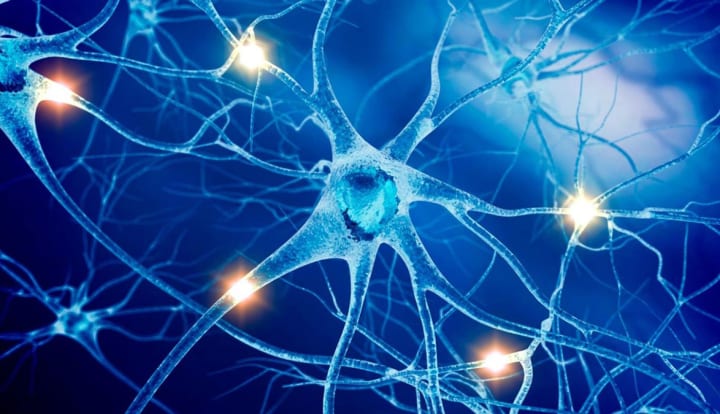The Cold War Against Aging
A colder body might extend your life.

Mice spend several periods of the day in a torporlike state during which their body temperature dropped from a normal 102 degrees Fahrenheit to as low as 88 degrees Fahrenheit. Diet restriction have long been known to greatly extend the average life-span of laboratory rodents, fish and insects. Decades ago some researchers—Ronald Hart, Ph.D., and Angelo Turturro, Ph.D.—wondered if the temperature dips in the mice might play a role in enhanced longevity. Their research with animals suggested that normal levels of body heat help bring about a gradual biochemical meltdown in the body's cells. . . which might explain why we age.
As the scientists explained it, in the normal process of metabolism, the destructive, wildly unstable bits of molecules known as free radicals are produced inside cells. Free radicals are uncharged molecules. They are typically highly reactive and short-lived. Ideally the cells keep these molecular terrorists under house arrest in the membranes of the very structures in which they're produced. Scientists found evidence that with age these membranes become “leaky" in animals. As free radicals leak out, their ricocheting activity can tear up cell membranes, cell structures, proteins and even DNA itself.
The leakage problem can escalate dramatically, he explains because the cell makes its own containers for free radicals. If leaked free-radical scavengers hit something that's involved in the actual machinery that produces the containers, faulty containers will be produced, which will allow even more leaking.
Slow metabolism, fewer free radicals are produced.

The idea that free radicals play a leading role in the aging process has been around since the fifties. Most researchers have emphasized only the radicals produced by the metabolism of oxygen. We're talking about every bit of metabolism in the cell, including metabolism of drugs, foods and certain hormones. All of these compounds are oxidized during metabolism and can cause damage similar to the oxygen radicals. But where does lowered body temperature fit in? The activity rate of enzymes involved in metabolism is keyed to body temperature. As you cool down, the slowing of enzyme activity slows metabolism and fewer free radicals are produced. Scientists have been looking for ways to decrease body temperature in order to “lower the flame on metabolism", for decades.
One way to test the theory was to find a drug that lowers body temperature for a number of hours, has no side effects and keeps working night after night. Roy Walford, M.D., a prominent UCLA aging researcher who has also had done pioneering studies on low temperature and longevity, achieved this using marijuana on mice, in the late 20th century. But the animals quickly became so tolerant of the drug that after two or three times they were stoned but not hypothermic. They were experiencing a subnormal body temperature. The drug though would might eventually be a complex drug —whose action on the brain lowers body temperature as a side effect—but without hallucinogenic properties.
Would mind over matter work? When scientists tried bio-feedback techniques, they found that unlike heart rate or blood pressure, body temperature reacts far too slowly for any feedback benefits to take place. Even a corpse cools only 11 degrees Fahrenheit an hour.
You can't sit around meditating all day.

Meditation, on the other hand, would seem to be a natural because it lowers oxygen consumption. A body consuming less oxygen would be oxidizing, or burning, less fuel. But studies of transcendental meditators by Herbert Benson of Harvard University and others failed to find any drop in rectal temperature. In travels in India, Walford met a few yogis whose body temperature dipped slightly when they meditated. But this is scarcely practical for busy westerners since you can't sit around meditating all day. Though it sounds like great idea, and you probably would live a longer life that way.
Eventually these fringe scientists hoped science would find a method that's safe, convenient and will turn humans into a kind of hibernating animal at night, with body temperatures hovering at around 88°. Cold torpor, might be a much better route to life extension than cutting down on dietary calories. Caloric restriction lowers temperature about two degrees, on the average, and extends life by about 20 percent. If 2 degrees Fahrenheit equals 20 percent, then 8 degrees Fahrenheit equals about 80 percent. This is only speculation at this point, but estimates are that we could get a life-span extension ranging from about 50 percent to a doubling.
58 degrees brings body functions to a near halt.

If lowering body temperature to 88 degrees Fahrenheit slows metabolic activity to a crawl, plummeting it to 58 degrees Fahrenheit brings body functions to a near halt. Surgery which is performed in this chilly zone now allows neurosurgeons to defuse particularly difficult aneurysms, bubble-like weak points in the walls of blood vessels that can burst at any time. Such hypothermic operations permit the repair of aneurysms that otherwise are practically inoperable
The procedure is literally a heart stopper. The patient is anesthetized, hooked up to a heart-lung bypass machine and slowly cooled by a combination of tech blankets through which liquid coolants circulate; a cooled operating room; and chilling the blood by circulating it through the heart-lung machine. At a body temperature of about 82 degrees Fahrenheit, the heart stops working and the bypass machine takes over the job of pumping blood. At 58 degrees Fahrenheit, the surgeons stop the pump and tilt the operating table, draining the patient's blood out of the body and into the bypass machine. At that point, there's no blood in the body, no brain-wave activity, no heartbeat—a state that some have termed suspended animation. This profound hypothermia, which greatly lowers the oxygen requirement of the brain and other organs, buys the team up to 55 minutes in which to see tiny brainstem blood vessels that may be obstructing their approach to the aneurysm. They then put a clip on the aneurysm, sealing it off from the circulation and putting an end to the risk of a large blood vessel exploding.
Cold Storage is still a distant reality.

Russian scientists in the mid 1980s claimed to have revived a salamander after it had spent more than 90 years trapped under ice in Siberia. Large amounts of cold-protective substances were found throughout the body.
Finally there's the bottom line of low temperature, 320 degrees Fahrenheit below zero, the temperature at which nitrogen gas turns to liquid. Blood cells, sperm cells and human embryos have been brought back from liquid-nitrogen temperatures. Could an entire body be frozen, thawed and revived? As we look in nature, we may find new combinations of chemicals that will help in the cryopreservation of tissues and organs, but we're a long way from putting people into a suspended frozen state that allows for long-term survival.
About the Creator
David McCleary
Holistic health practitioner. Believes in using natural remedies over traditional medications whenever possible. Volunteers at a recycling plant.






Comments
There are no comments for this story
Be the first to respond and start the conversation.